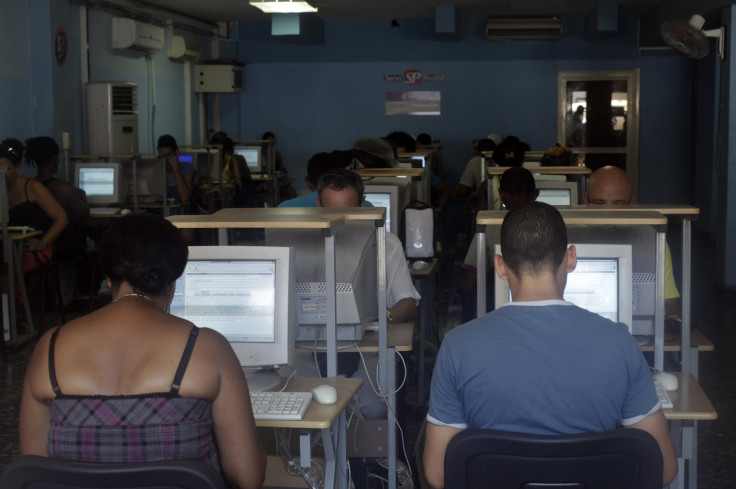Cuban Internet Access Crawls Toward 21st Century, But Not There Yet

Cuba has finally activated its $70 million fiber-optic cable nearly two years after it was installed, providing the island nation with a high-speed Internet connection for the first time.
Financed by the Venezuelan government, the cable lays the foundation for modernizing Cuba’s Internet connectivity, although the benefits are not expected to reach most of the country's people for quite some time, meaning until the necessary infrastructure is built up.
Public access to the Internet remains heavily restricted by the Cuban government. The system relies on outdated technology such as dial-up modems and spotty satellite connections. Few (or no) households are wired to access the new broadband cable.
According to the Cuban government, 2.6 million of 11.2 million people had access to the Internet in 2011, although it made no distinction between that and the country’s government-filtered “intranet.”
Those who are able to get online typically gain access through public spaces such as schools, libraries, and cafes. In most cases, access is restricted to email use for communication at work.
The Cuban government has said it plans to expand Internet access at these public spaces, as well as at hospitals and other government institutions, which will require more investment in the island nation’s communications infrastructure.
“Tremendous investment would be needed to deliver anything like modern Internet connectivity to a broad segment of the population,” Larry Press, a professor of information systems at the California State University at Dominguez Hills, told the GlobalPost.
“They have very limited resources and will not be able to attract significant investment without new government policies, institutions, and culture,” Press added. “The goal cannot be ‘21st century’ in a developed nation like Korea, but catching up with nations in the developing or middle-development world.”
© Copyright IBTimes 2024. All rights reserved.











